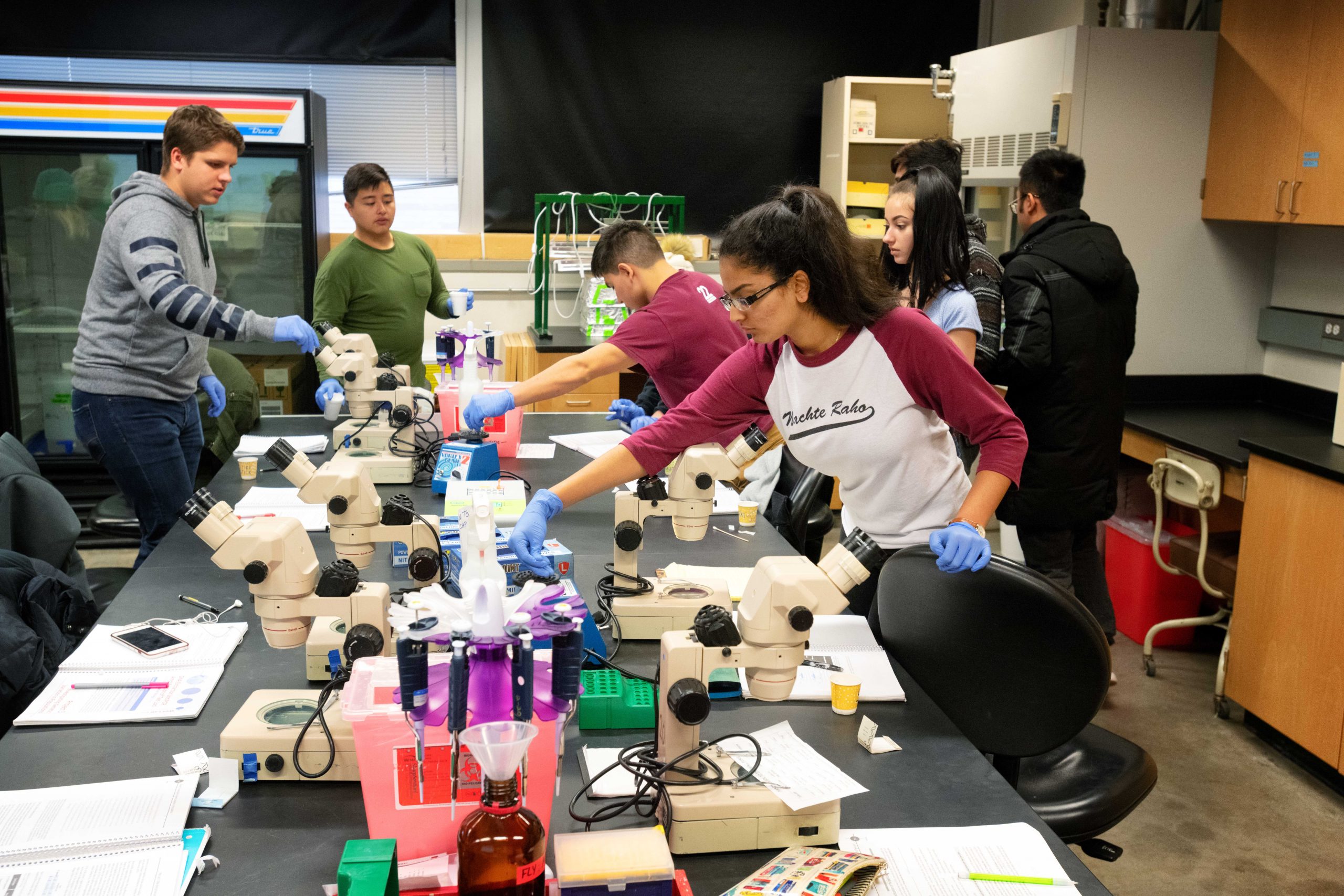33 Teaching in laboratory settings

Planning for a lab
To prepare for your lab, reflect on these questions:
- What are the necessary materials and equipment? Are you familiar with them?
- What are the safety concerns and procedures for this lab session?
- What is the role of this lab in the course? How can you draw connections between the larger course and the lab and contextualize activities?
- How can you demonstrate new and complex practices for students?
- How much time will the experiment take?
- What questions should you ask to make students think more profoundly about what they are doing and why? What are the opportunities for students to collect data and draw supported conclusions?
- What are the anticipated challenging aspects of the lab? Where might students need additional support when performing the experiment?
- How will you monitor student progress and provide feedback?
💡 After reflecting on these questions, note your key insights:
Leading a lab
- Establish specific goals of the lab and write them on the board or share them as a presentation slide.
- Share an outline of the lab activities.
- Review safety issues for the lab and community guidelines for participation and group work.
- Remind students about where to find devices and individuals to help in an emergency.
- Brainstorm what makes group work effective in the context of your lab. Give students ownership over their learning experiences.
- For group work, consider roles to make students accountable for the individual component of their work (e.g., manager, skeptic, educator, conciliator). Assign roles based on neutral factors (birthday proximity, hair length, who woke up first, etc.), as it is an inclusive practice and another way for the group to get to know each other a bit as human beings. If possible, rotate roles on a regular basis.
- Make sure you check in with groups and visit each student individually during the lab. Ask students questions that will require thoughtful answers (rather than yes/no questions), such as what they are doing and why, and then help them to interpret their results. Invite students to link what they are doing at that moment to what has been learned in the classroom or through the textbook.
- Ask students concrete questions to monitor their progress during the lab.
Draft a brief plan for the next lab you will be teaching, including the approximate times for activities. Consider addressing or adapting these three major structural components to your context.
1. Introductions and goal setting: Establish a welcoming environment and get to know your students. Set expectations and goals for the lab section and collaboratively create or review community agreements. Give transparent instructions for group work. Think of effective ways to introduce the conceptual background for the lab activities and connect the materials and assignments to the broader course context.
2. Hypothesis and experiment: Before running the experiment, ask students to generate a hypothesis. Organize students’ group work to draw connections from their hypotheses to the lab or plan an experimental design to test their hypotheses. Ask students to observe or conduct the experiment, then collect and analyze data. Identify and plan for potential areas of difficulty for students and think of ways you could address them.
3. Feedback and assessment: Provide students with feedback during the lab and assess them. How will you determine whether all of your students understood the lab and are successfully engaged in group work? Think of ways to clearly communicate grading or participation criteria.

Feedback/Errata